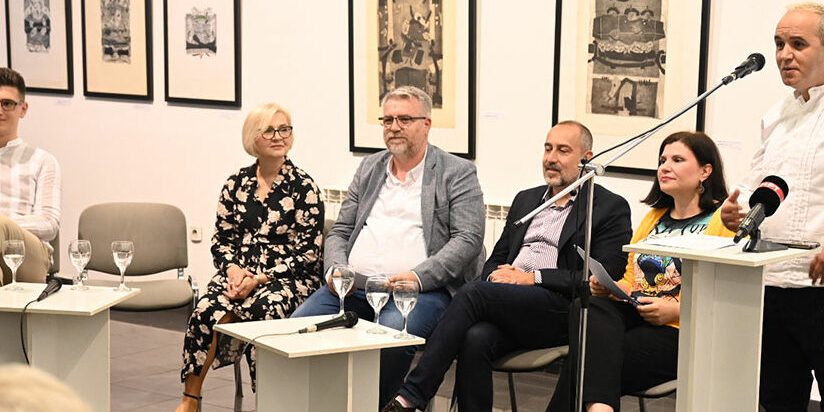The Institute for Communication Studies and IREX, as part of USAID’s Media Literacy Project “Youth Think,” launched the Dictionary of Media Literacy. This lexicographic edition is the first serious attempt to systematize the terms that appeared in the digital age and the new ways of communication, with the development of the media and with the appearance of new tools and activities in the online sphere.
“The goal of creating this online publication is to fill the gap that has been faced by media professionals, linguists, communicators, teachers, and all media users for years. That’s why we created this dictionary, which has two main features: interdisciplinarity and an attempt to keep pace with the development of new technologies,” said Alexandra Temenugova from the Institute for Communication Studies, who coordinated the creation of the publication.
Mihailo Lakhtov, the director of the USAID Media Literacy Project “Youth Think”, which made media literacy a part of formal education, said that this resource will serve as a primary language base for all educators, teachers in elementary, secondary and higher education, for journalists , the media, pupils and students, parents. “When you create a curriculum for students of primary and secondary education, when you train teachers, when you do training for journalists, for students and young people, it is more than necessary to build a unified base of terms and key terms that will be used in a variety of fields, such as what is a journalist, what is a media, what is disinformation, what is propaganda, etc.”
Emil Niami, the editor-in-chief of the Dictionary explained that it contains the interpretation of more than 700 terms in the fields of media literacy, communicology, journalism, linguistics, philosophy, anthropology, law, economics, etc. It is available as an online publication in Macedonian and Albanian, and for each term its English version is also given. For the majority of terms, additional information is provided about them (historical facts, functional information, frequency of use, stylistic characteristics, etc.), in order for the user to get a complete idea of the term itself. Since it is a specific interdisciplinary matter, 15 proven theorists and practitioners from different fields and educational institutions participated in its creation. “The idea is to update and enrich this publication with new concepts in the future as well. “Today’s promotion is just the beginning of a comprehensive and long-term process,” said Niami.
Simona Gruevska-Majoska, editor of the Dictionary and professor at the Institute of the Macedonian Language, emphasized that this publication is of great importance for domestic lexicography. “We tried to exhaust the expected lexicographic corpus as much as possible, but also to modernize it, taking into account the circumstances that dictate the modern communication and linguistic processes”, said Gruevska-Majoska. Sefer Tahiri, who is the author of the Dictionary and the editor of the Albanian language version, indicated that this resource is really useful for the academic community, especially since the interpretations are adapted with examples in the Albanian language. High school student Luka Pavićević also participated in the group of authors, who said that his participation was in order for this Dictionary to contain the terms that reflect the modern communication code characteristic of the new generation of “millennials”.
The Institute for Communication Studies coordinated the nearly year-long process of creating the Media Literacy Dictionary within the framework of the USAID Media Literacy Project “Youth Think”, which is implemented by IREX in partnership with the Institute for Communication Studies, the Macedonian Media Institute and the Youth Educational forum.






